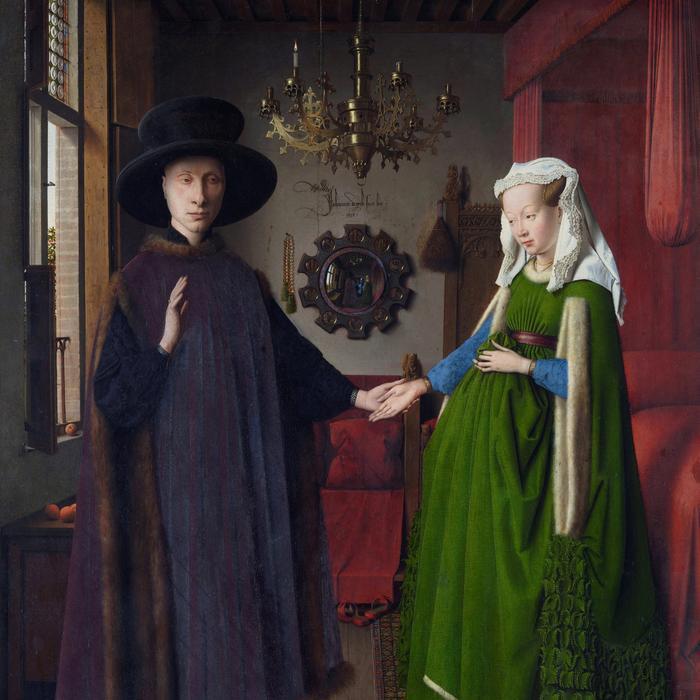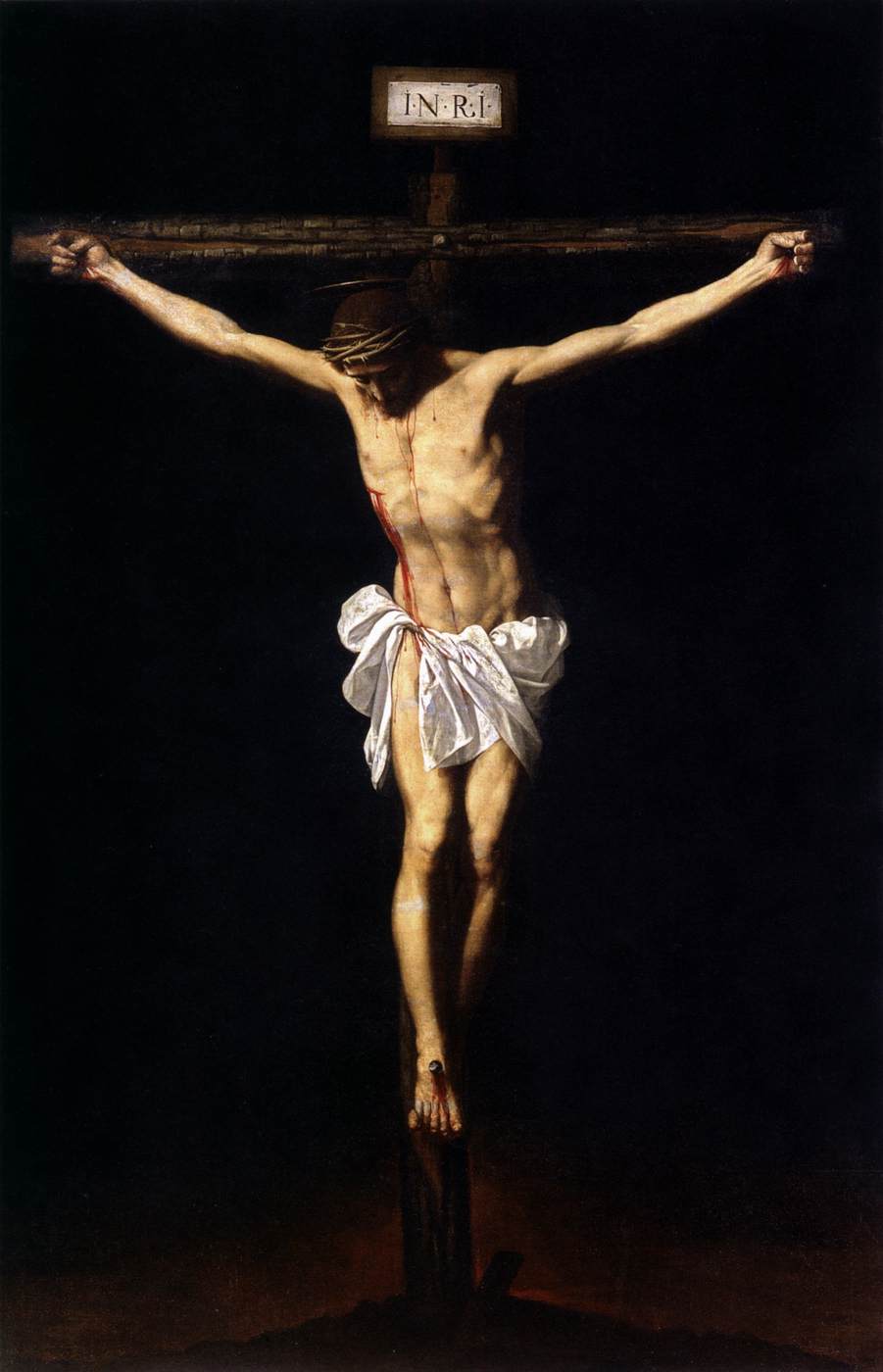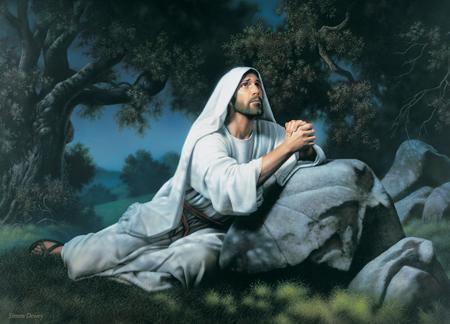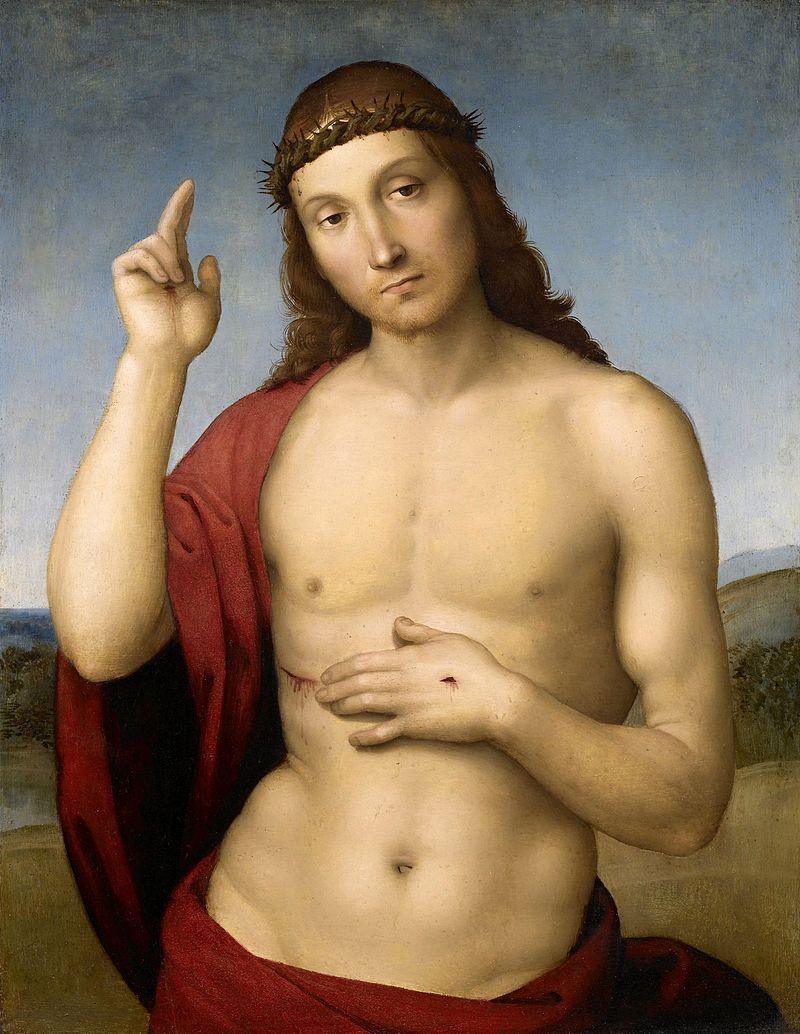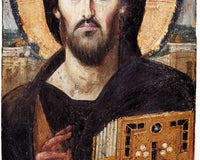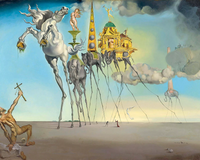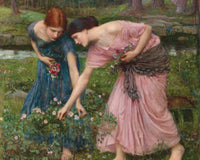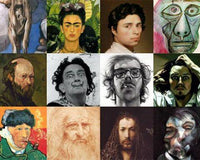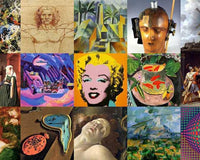Often there is more to an image than meets the eye, and many of the world's most famous artworks have hidden secrets beneath the surface. You can study your favorite painting over and over again and still discover a new cryptic symbol or hidden details. Some of the most famous artists in the world intentionally leave secret messages in their paintings, and some have even sparked popular conspiracy theories, whether to subvert authority, challenge the public, or reveal something about themselves. Hundreds of years later, thanks to technological advances, many of these secret messages are being discovered for the first time. Kuadros wanted to unveil those mysteries for you. These are the famous paintings we have considered to be the most enigmatic.
No.1 The Last Supper - Leonardo Da Vinci

Leonardo da Vinci's famous depiction of Jesus and his disciples at the Last Supper has been at the center of some popular theories in recent years, as described in the 2003 novel "The Da Vinci Code" by Dan Brown and the 2006 film adaptation starring Tom Hanks. Brown proposed that the disciple to the right of Jesus is actually Mary Magdalene disguised as John the Apostle. He also suggests that the "V" shape formed between Jesus and "John" represents a female womb, implying that Jesus and Mary Magdalene had a child together. Art historians, however, are skeptical. Da Vinci's Last Supper is significant for its expressive composition and use of perspective, which was an innovation at the time. Da Vinci aligned the figures and the walls of the painted room with strings radiating from a nail on the wall where the original is painted, above a dining room in a monastery in Milan. Many suggest that John's appearance is feminine simply because that is how he was represented. Expert Mario Taddei told Artnet.com: "Leonardo had to copy the Last Suppers before him, and John looks like a woman." But a much more convincing secret message was discovered by Italian computer technician Giovanni Maria Pala. He claims that Da Vinci hid musical notes within "The Last Supper" that, when read from left to right, correspond to a 40-second hymn that sounds like a requiem.
When the abbot of the monastery complained that the painting was taking too long, it was said that the angry artist threatened to use the face of the abbot as a model for the traitor Judas. In the end, Da Vinci visited the prisons of Milan to find the perfect villainous face for Judas, who is seated fifth from the left. Professional art historians say there is no evidence for the conspiracy theories about the Last Supper presented in "The Da Vinci Code" and other books that address the subject; and they reject the identification of the figure to the left of Jesus as his follower Mary Magdalene, rather than the Apostle John.
Buy a reproduction of The Last Supper at the Kuadros online store
No.2 The Creation of Adam - Michelangelo

"The Creation of Adam" is probably the most famous of the nine biblical panels that Michelangelo painted on the ceiling of the Sistine Chapel. But did you know that the scene contains a human brain? The hidden message is found in the fabric where the shape of the brain can supposedly be distinguished. Apparently, the artist introduced it into his fresco because at that time autopsies were prohibited by the Church. It turns out that Michelangelo was an expert in human anatomy. At age 17, he had a somewhat gruesome job dissecting corpses from the church cemetery. Therefore, some believe he would have liked to present this passion for anatomy in one of his greatest achievements, on the ceiling of the Sistine Chapel. According to neuroanatomy experts Ian Suk and Rafael Tamargo, the painter placed some carefully concealed illustrations of certain body parts on the ceiling of the Sistine Chapel. And if you observe the drapery surrounding God in "The Creation of Adam," you will find that it creates an anatomical illustration of the human brain. Suk and Tamargo believe Michelangelo intended the brain to represent the idea that God was endowing Adam not only with life but also with human knowledge.
A doctor says that Michelangelo was very familiar with the human brain and that he used his knowledge of neuroanatomy to symbolically represent the brain in his "Creation of Adam." Other interpretations go even further, this painting goes against religious ideology and conveys the message that everything begins with man, rather than the opposite. Quite a sacrilegious thought, indeed. A work of art so famous, and yet we are still finding hidden secrets centuries after its conception.
Buy a reproduction of The Creation of Adam at the Kuadros online store
No.3 The Mona Lisa - Leonardo Da Vinci

Namely, the Mona Lisa, the most famous painting among famous paintings, the most visited work in the Louvre museum. This enigmatic lady actually has more to see here than that infamous half-smile. First of all, it is speculated that she is pregnant, given the way her arms are placed over her belly and the veil around her shoulders, which pregnant women used to wear during the Italian Renaissance. But the most recent findings are in her eyes. In 2011, Italian researcher Silvano Vinceti claimed he found letters and numbers painted microscopically in them. He told the Associated Press that the "L" over her right eye likely represents the artist's name. But the meaning of the letter "S" that you see in her left eye and the number "72" beneath the arched bridge in the background is less clear. Vinceti believes that the "S" could refer to a woman in the Sforza dynasty that ruled Milan, meaning that the woman in the painting may not be Lisa Gherardini, as has long been believed. As for the "72," Vinceti argues that it could be due to the importance of numbers in both Christianity and Judaism. For example, "7" refers to the creation of the world, and the number "2" could refer to the duality of men and women.
Even more surprising, in 2015, a French scientist using reflective light technology claimed to have found another portrait of a woman beneath the image we see today. The consensus is that this was the "first draft" of da Vinci, and that he painted it to create his masterpiece.
Buy a reproduction of The Mona Lisa at the Kuadros online store
No.4 Café Terrace at Night - Vincent Van Gogh


This painting of colorful outdoor views is a picturesque work, the vision of a relaxed viewer enjoying the charm of his surroundings without any moral worry. It recalls Van Gogh's mood when he wrote that "the night is more alive and filled with more colors than the day." At first glance, Vincent van Gogh's 1888 oil painting seems to be simply what the title describes: a picturesque café terrace in a colorful French city. But, in 2015, Van Gogh expert Jared Baxter proposed the theory that the painting is actually the artist's version of "The Last Supper." A detailed study shows a central figure with long hair surrounded by 12 individuals, one of whom seems to slip into the shadows like Judas. There also appear to be small hidden crucifixes throughout the painting, including one above the central figure similar to Jesus.
A religious allusion would not be too out of place for Van Gogh. Before dedicating his attention to painting, the famous Dutch artist had wished to "preach the gospel everywhere," and his father, Theodorus van Gogh, was a pastor of a Dutch Reformed church. At the time of working on Café Terrace at Night, Van Gogh wrote to his brother, Theo van Gogh, explaining that he had a "tremendous need for, I must say the word, religion," with direct reference to the painting.
Van Gogh never signed "Café Terrace at Night." However, he specifically mentioned the painting in three pieces of correspondence, so art historians trust that he painted it.
Buy a reproduction of Café Terrace at Night at the Kuadros online store
No.5 The Arnolfini Portrait - Jan Van Eyck

The image hangs in the National Gallery in London and probably represents Giovanni di Nicolao Arnolfini and his wife Costanza Trenta. The identity of the couple has been narrowed down from only a few possibilities, but they were the only ones who lived in Bruges long enough to know the painter closely. The first clue to the painting is the environment, in a fairly wealthy home filled with beautiful objects and clothing. The symbols in the painting are impossible to overlook, although they are not of a single interpretation. Nor is the meaning of the image entirely clear. Over the centuries, it has been interpreted as a portrait of a newlywed couple, with symbols drawn from a wedding event, starting with the obvious fertility symbol of Constanza's pregnant body position, which as shown was merely a fashion whim. In fact, the couple eventually had no children. Other symbols of fertility include the red bed and the carpet. The shoes lying on the wooden floor also had significance as common wedding gifts for a bride from a groom. The oranges symbolize fertility and love, and the loyalty of the little dog. But if you look closely at the mirror in the center of the room, you will see that there are two figures entering the room. It is widely believed that one of them is meant to be Van Eyck himself. You will also notice that there is a Latin inscription in very elaborate writing on the wall above the mirror, which translates as "Jan van Eyck was here. 1434."
However, the most important part of the painting, which is not shown, is the discrepancy in the years. The painting, as mentioned earlier, was dated 1434, while Costanza Trenta died in 1433. The painting may also have had a different context than the one it was completed within. As demonstrated by an X-ray, Jan van Eyck made several changes, and whether these were related to such an occurrence or not is subject to dispute.
Buy a reproduction of The Arnolfini Portrait at the Kuadros online store
No.6 The Ambassadors - Hans Holbein the Younger

Long before 3D glasses or Easter egg hunts became popular, Renaissance painters managed to have their audience view the pieces from new angles by playing with perspective. One of the most famous examples of this technique is the double portrait by Hans Holbein the Younger, The Ambassadors, which has a history as rich as the many hidden details in its brushstrokes.
The interpretation of the painting as an allegory of the political and religious turmoil of Henry VIII's schismatic England, in which the unfortunate ambassadors find themselves trapped, has been universally accepted for over a hundred years.
The painting presents quite an impressive illusion at its base. If you look at the distorted image at the bottom of the painting from right to left, it appears to be an anamorphic skull. Scholars believe it is meant to remind us that death is always around the corner.
In the upper left corner, behind the lush green curtain, you will find Jesus in an iconic pose. Some art historians believe this divine cameo is linked to the memento mori skull and alludes to a place beyond mortality. It is a symbol intended to suggest that there is more than death, namely, a future life through Christ. Others believe that the hidden icon represents the division of the church that Henry VIII was inflicting on his countrymen.
The figure on the left side of The Ambassadors is Jean de Dinteville, the French ambassador to England. He was about to turn 30 at the time of this double portrait. His friend and diplomatic companion Georges de Selve, in the picture to the right, was only 25 at the time and had already served as French ambassador to the Republic of Venice several times.
The oil portrait on oak was made to hang in the hallways of Dinteville's house. However, the National Gallery has been exhibiting Holbein's stunning painting since 1890. For over 125 years, it has been one of the museum's most prized exhibits in London.
Buy a reproduction of The Ambassadors at the Kuadros online store
No.7 The Birth of Venus - Sandro Botticelli


The nudity in Botticelli's famous painting was quite innovative for the late 15th century. But that is not where the artist's audacity ends. Some art historians believe that the shell in which Venus is riding the ocean waves is actually meant to symbolize female genitalia and thus allude to fertility, creating a birthing scene that reflects Venus’s oceanic origins while symbolically connecting to human birth.
Venus, the goddess of love, sits modestly in the seashell, being carried ashore by Zephyr, the god of the west wind. There, one of the Horae, goddesses of the seasons, is ready with a cloak to dress the newly born deity. The fourth figure accompanying Zephyr is meant to be an Aura (wind nymphs) or Chloris, a nymph associated with spring and blooming flowers like those flowing through the image.
Christian inspiration was dominant in medieval art, so nudity was rarely depicted. However, the rise of humanism brought a renewed interest in the myths of ancient Rome, along with a resurrection of nudes.
During this early Renaissance period, painting on wood panels was popular. But the popularity of canvas was rising, especially in humid regions where wood tended to warp. As canvas was cheaper than wood, its perceived status was a bit lower, so it was reserved for works that were not meant for large public exhibitions. The painting stands out as the first canvas work in Tuscany.
The Birth of Venus was intended to hang in a room. The nudity of the piece takes on a more sensual tone when you know it was intended to hang above a marital bed. This place and its daring representation contributed to The Birth of Venus being hidden from public view for about 50 years. The painting has a companion piece. Although it was completed four years before its sister, Primavera can be seen as a sort of sequel to The Birth of Venus. While the second represents Venus’s arrival in a world on the verge of blooming, the first shows the blooming world around the now-clothed maternal figure. It is said that the pair of paintings was intended to communicate how "love triumphs over brutality".
Botticelli requested to be buried at the feet of his Venus. Not the painting, of course. He wanted to lie eternally by his earthly inspiration, Simonetta Cattaneo de Vespucci. Called the most beautiful woman in Florence, as well as the most beautiful woman of the Renaissance, Simonetta was the muse who inspired several of Botticelli's works, including The Birth of Venus and Primavera. When she died in 1510, Botticelli was buried near this noble married woman, for whom it is speculated he harbored unrequited love.
Buy a reproduction of The Birth of Venus at the Kuadros online store
No.8 Self-Portrait - Rembrandt

Rembrandt painted, drew, and engraved so many self-portraits in his life that the changes in his appearance invite us to assess his mood by comparing one image to another. Such biographical reading is encouraged by the way the artist confronts the viewer directly. Rembrandt painted this self-portrait in 1659, after having suffered a financial failure despite so many years of success. His spacious house on Sint-Anthonisbreestraat and other possessions had been auctioned off the previous year to satisfy his creditors. In this late work, the sunken eyes that bore into the viewer's seem to express inner strength and dignity. However, interpreting paintings based on an artist’s biography is dangerous, particularly with an artist whose life has been idealized to the extent that Rembrandt’s has. The light that so effectively illuminates the head also highlights Rembrandt’s left shoulder and, to a lesser extent, his widely executed joined hands.
In 2001, British artist David Hockney and American physicist Charles Falco announced that they had found evidence that Rembrandt and other Old Masters relied heavily on the use of lenses and curved mirrors to create their real scenes and portraits. And in August 2016, two researchers in the UK, artist Francis O'Neil and physicist Sofia Palazzo Corner, published a study in the Journal of Optics explaining how Rembrandt might have used combinations of curved mirrors and lenses to create his famous self-portraits. Researchers see many details in Rembrandt's self-portraits that support their theory, including the strong light in the center of the portraits and the relative darkness at the edges, which is also seen in reflections projected by curved mirrors.
Artists constantly use new pigments and oils to produce more vibrant, luminous, and interesting colors. Rembrandt van Rijn was no different. The old Dutch master had technique, creativity, and painstaking work for him. He also had chemistry. A new analysis of his works shows that he used a rare compound in some of his paintings: a lead carbonate mineral called plumbonacrite, Pb5 (CO3) 3O (OH). Knowing the composition of the artist's palette will help conservators discover how to better preserve his artworks over time.
Buy a reproduction of Rembrandt’s Self-Portrait at the Kuadros online store
No.9 Bacchus - Caravaggio

Caravaggio's painting of Bacchus contains all the revelries associated with the mythical libertine bubbling beneath its surface. It is this sense of storm beneath calm that makes it such a powerful work of art. Bacchus, the god of wine, is generally shown drunk; Caravaggio's Bacchus is serene and self-sufficient. He is often seen riding a triumphal chariot pulled by tigers, leopards, or goats; in Caravaggio's version, the Bacchic procession is either about to begin or has just finished. Or perhaps this Bacchus has entirely different plans.
The first time something hidden was discovered in this work was in 1922, when an art restorer was cleaning the canvas of this 1595 piece. As the accumulation of dirt over the centuries disappeared, a hidden portrait became visible. In the crystal wine jug in the lower left corner, a tiny Caravaggio sits in the small light reflection on the surface of the wine.
Today, almost a century later, researchers confirm it. It does not seem too hidden, but thanks to modern technology called reflectography, art experts were able to discover in 2009 that the image of a man is actually hidden in the wine jug at the bottom left. And it may be the same Da Caravaggio. "Caravaggio painted a person standing upright, with one arm extended toward a canvas on an easel. It seems to be a portrait of himself while painting," art expert Mina Gregori told The Telegraph.
Buy a reproduction of Bacchus at the Kuadros online store
KUADROS ©, a famous painting on your wall.

